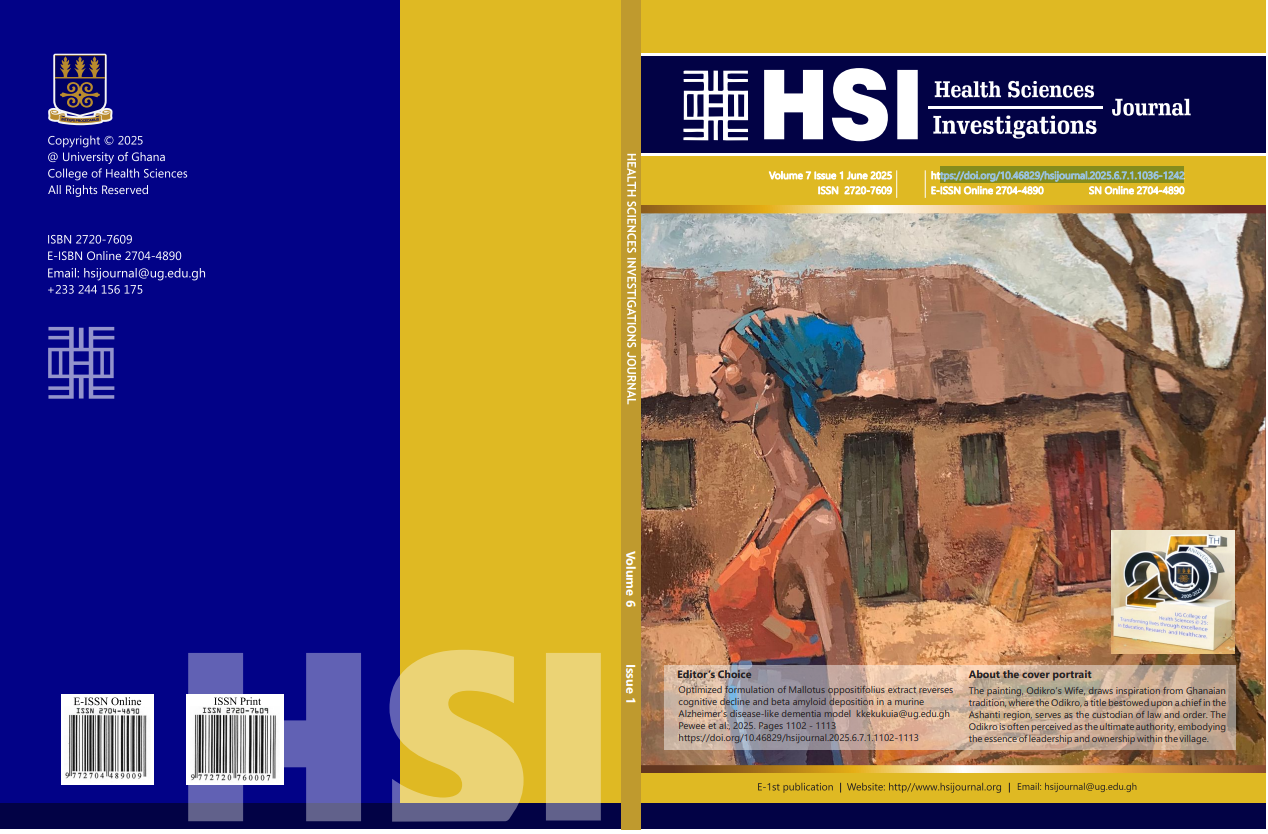Human Strongyloidiasis in Ghana: A scoping review of prevalence and geographic distribution (2003–2023)
Human Strongyloidiasis in Ghana
Abstract
Background: Human strongyloidiasis is a neglected tropical disease with global public health concerns. Despite several interventions geared towards the prevention, control, and elimination of human strongyloidiasis in Ghana, infection and reinfection continue to occur, negatively impacting the health of affected populations. Lifelong autoinfection and fatal hyperinfection syndrome in immunocompromised individuals are often reported.
Objective: This scoping review aims to map and synthesise existing evidence on the prevalence and geographic distribution of human strongyloidiasis in Ghana between 2003 and 2023, identify research gaps and inform future priorities regarding control and elimination of the infection.
Methods: Original peer-reviewed studies published in English (2003 - 2023) that investigated human strongyloidiasis in Ghana were systematically searched and retrieved from six electronic databases and included in this review. Additional studies were identified from the reference lists of the reviewed articles. Relevant data were extracted from the included articles and presented in narrative and tabular formats.
Results: Twenty (20) articles that met the inclusion criteria were reviewed under broad subthemes: geographic distribution, prevalence, laboratory diagnostic methods, target population, and nature of public health intervention. Ten (50.0%) studies were conducted in the southern, six (30.0%) in the middle belt, and four (20.0%) in the northern sectors. Overall, 17 studies used cross-sectional designs, two retrospective,
and one case-control method. The reported prevalence of human strongyloidiasis in Ghana ranged between 0.1% and 41.1%. However, a prevalence of 0.1% - 2.2% was reported in children, 0.5% - 41.1% in adults, 0.4% in HIV seropositive individuals, and 2.9% in food vendors.
The geographical prevalence of human strongyloidiasis ranged between 0.1% - 21.2%, 0.4% - 2.9%, and 0.3% - 41.1% in the Northern, Middle belt, and Southern sectors, respectively. The direct wet mount and formal-ether concentration technique (70.0%), PCR (15.0%), and culture and other diagnostic techniques (5.0%) were used.
Conclusion: The national prevalence of strongyloidiasis in Ghana, based on this review, is low-to-moderate (median 1.45%), but extreme geographic heterogeneity exists, with localised hyperendemic regions (e.g., 21.2% and 41.1%) accounting for an increase in the mean to 4.5%. Population-weighted studies are essential for accurate national estimates, and targeted interventions are urgently needed to address hightransmission hotspots and underlying drivers of transmission. This review proposes further research and targeted interventions relevant to Ghana’s efforts to meet the WHO’s human strongyloidiasis elimination target by 2030.


